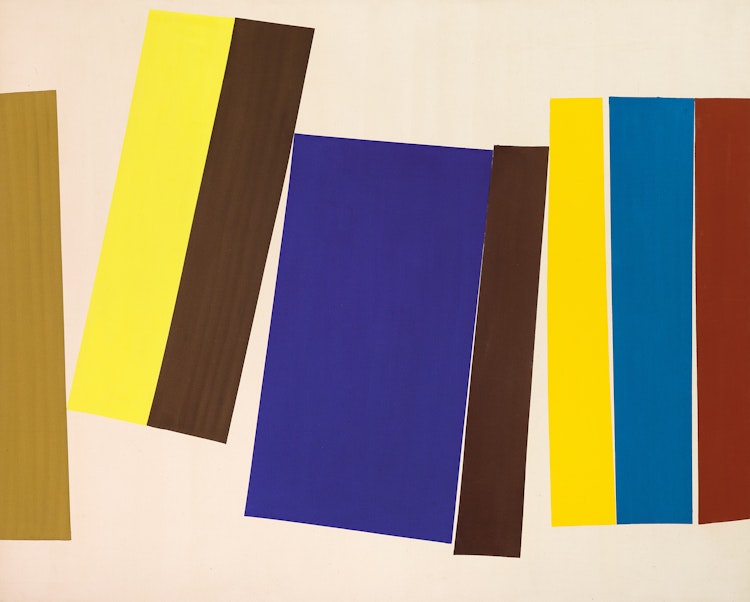AC-69-29 by William Perehudoff

William Perehudoff
AC-69-29
acrylic on canvas
signed and inscribed “AC-69-#29” on the reverse
63.5 x 78.75 ins ( 161.3 x 200 cms )
Auction Estimate: $20,000.00 - $30,000.00
Price Realized $51,920.00
Sale date: May 28th 2019
The Gallery/art placement inc., Saskatoon
Hodgins Art Auctions, Calgary, November 28, 2006, lot 317
Private Collection, Calgary
Roald Nasgaard, Abstract Painting in Canada, Toronto/Vancouver, 2007, pages 287 and 291
Dennis Reid, A Concise History of Canadian Painting, Toronto, 2012, page 349
“AC-69-29” is quintessentially ‘Color-Field’ in its bold shapes and avoidance of three-dimensionality. Figure and ground are fused, consisting of vertical rectangles of colour that barely touch one another against a raw canvas, the artist’s strategy of painting an image that bears only a hint of the artist’s gesture was a shared trait among artists affiliated with abstract painting of the sixties. Perehudoff’s shapes are flat and lack any evidence of a brushstroke, only subtly referencing their hand-made nature in the slightly irregularly-shaped sides. Color-Field painting placed less emphasis on action in favour of an overall consistency of form. In “AC-69-29” Perehudoff showcases his own unique voice within the development of abstract painting in North America.
Share this item with your friends
William Perehudoff
(1919 - 2013) RCA
William Perehudoff was born in Langham, Saskatchewan and maintained a connection to this area throughout his life. In 1944, the Saskatoon Art Centre opened, and this provided Perehudoff with early and important access to art. Within a couple of years he was exhibiting regularly in group exhibitions such as the Saskatoon Exhibition and the Art Centre fall show. Throughout this phase of his development as an artist, he farmed in the summer and devoted himself to painting and his art education in the winter. Like many artists of the time, Perehudoff had been influenced by the motivations and methodologies of social realist artists such as Diego Rivera. Perehudoff took instruction from the influential French muralist Jean Charlot, as well as Amédé Ozenfant in New York, the French Purist and associate of Le Corbusier. Kenneth Noland, a very important colour field painter, was also a major influence to his work. Since the 1960s, Perehudoff was a central figure in Canadian abstraction. The effect of the flat plains and open skies that are so dramatically present throughout Saskatchewan seem to be detectable in his work. William Perehudoff received the Saskatchewan Order of Merit in 1994 and an honorary doctorate from the University of Regina in 2003. He was named a Member of the Order of Canada in 1998.

